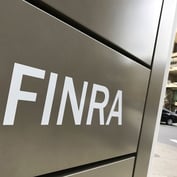What You Need to Know
- FINRA's plan would allow a home office to be a “residential supervisory location.”
- Home offices would be subject to certain limitations and rules, including regular inspections.
The Financial Industry Regulatory Authority has filed with the Securities and Exchange Commission proposed changes to FINRA Rule 3110 to allow a home office to be considered a non-branch “residential supervisory location” under certain conditions, Bates Group explains in a recent alert.
“The pandemic moved regulators to issue relief from strict regulatory requirements to firms in order to allow employees to work from home, including the use of new technology and communications to permit remote supervision,” Bates said.
With the proposal, which must be approved by the SEC, “FINRA is adapting to a new, post-pandemic ‘blended workforce’ model, one in which employees work at both conventional offices and in their private residences — and which FINRA acknowledges is likely to endure,” Bates said.
As FINRA explains, Residential Supervisory Location under FINRA Rule 3110 “would align FINRA’s definition of an office of supervisory jurisdiction (OSJ) and the classification of a location that supervises activities at non-branch locations with the existing residential exclusions set forth in the branch office definition to treat a private residence at which an associated person engages in specified supervisory activities as a non-branch location, subject to safeguards and limitations.”









 July 29, 2022 at 02:18 PM
July 29, 2022 at 02:18 PM








